
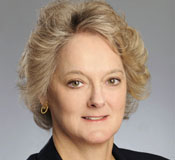 |
 |
 |
 |
First human exposome in United States
 |
| Gary Miller is director of the new HERCULES Center |
Co-investigators at Rollins School of Public Health and Georgia Tech have received a $4 million grant over four years to establish the HERCULES Center at Emory (Health and Exposome Research Center: Understanding Lifetime Exposures). The grant is the first exposome-based center grant awarded in the United States.
The HERCULES Center is funded by the NIH's National Institute of Environmental Health Sciences.
The exposome is a relatively new concept that incorporates all of the exposures encountered by humans. It is proposed to be the environmental equivalent of the human genome and includes lifetime exposures to environmental pollutants in food, water, physical activity, medications, homes, and daily stressors. Exposome research looks at the holistic view of the human body's exposures, how the body responds to those exposures, and their combined effects.
"HERCULES is more than an acronym," says Gary Miller, director of the new center. "Sequencing of the human genome project was a Herculean task, and determining the impact of the complex exposures we face throughout our lives represents a similarly difficult challenge. The exposome itself represents all of the external forces that act upon us. We know that measuring the exposome will be extremely difficult but very worthwhile."
Scientists believe that when coupled with a growing understanding of genetics, the exposome will help uncover causes of many complex disorders, such as autism, asthma, and Alzheimer's.
A key feature of the center is the System Biology Core headed by Eberhard Voit in biomedical engineering. The core will provide expertise in computational approaches used to analyze and integrate large datasets. Read more.
Highlights from the 2013 General Assembly
Governor Nathan Deal's 40-day time period to sign or veto legislation that was passed during this year's legislative session ended May 7. The governor signed more than 325 bills, vetoed only five, and had no line-item vetoes in the state budget. Successful outcomes were achieved on several issues impacting the Woodruff Health Sciences Center. Some highlights include the following:
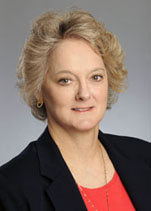 |
|
| Linda Womack, director of state government affairs at Emory |
State budget—In the FY 2014 Appropriations Bill, passed on March 31, the final day of the session, we are pleased that full funding for several important line items was restored during conference committee negotiations. Funding for graduate medical education was restored for two programs in the medical school's Department of Family and Preventive Medicine, and a proposed reduction in Medicaid physician reimbursement was dropped. In the mid-year 2013 budget, we secured the necessary state funding as the revenue source to obtain federal matching dollars for the private hospital disproportionate share (DSH) program, through which Emory's hospitals receive payments.
Hospital Provider Payment Program—Quick passage of the revamped Hospital Medicaid Financing Program (provider tax) during the first nine days of the 2013 session paved the way for its subsequent approval through the Department of Community Health (DCH) advisory committee and board. This restructured tax program will lessen the negative financial impact of the original provider tax on many Georgia hospitals, including Emory's. At its May 9th meeting, the DCH board adopted two sets of rules, setting the hospital provider payment amount and related Medicaid add-on for the current program and the framework for the new hospital payment program. On April 1, DCH submitted the Medicaid state plan amendment to the Centers for Medicare and Medicaid Services (CMS) to continue the current program. Discussions with the CMS Region IV office on the continuation of the current program and the upper-payment-limit calculations necessary to support the new program are continuing. With these two programs, Emory Healthcare goes from being a net annual loser as a result of the provider tax to a net annual winner. The state and the Georgia Hospital Association are very optimistic that both programs will be approved by CMS.
Patient Protection and Affordable Care Act (PPACA)—PPACA-related bills include, among others, HB 198, requiring licensing, certification, and training for health benefit exchange navigators; HB 389, allowing insurance companies to terminate, cancel, or not renew all existing conversion policies on the effective date of the PPACA, with 90-day notification to the insured; and HB 499, ensuring that any administrative guideline set by the PPACA does not create a legal basis for negligence or the standard or duty of care owed by a health care provider to a patient in medical malpractice cases.
Legislation to be carried over to 2014—This includes SB 94, allowing physicians to delegate to APRNs the authority to order imaging tests; HB 676, authorizing physicians to delegate to physician assistants the authority to prescribe schedule II controlled substances; and HB 662 and SB 14, allowing patients to take complaints of doctor or hospital mistakes to a panel of physicians for hearings instead of filing a lawsuit.
Read more details about the governor's action and carry-over legislation.—Linda Womack, linda.womack@emory.edu, 404-727-5306
New proton therapy center is christened and under construction
 |
Georgia's first proton therapy center, being built on the corner of North Avenue and Peachtree Street in Midtown, has been christened the Emory Proton Therapy Center, Winship Cancer Institute. Atlanta Mayor Kasim Reed joined Emory officials at a groundbreaking ceremony on May 2 for the 107,000-sq-ft, $200 million center, which will be operated by Emory Healthcare and is being built by Advanced Particle Therapy.
When it opens in 2016, the center will be one of fewer than 20 such facilities in the country. Once fully operational, it is expected to treat about 2,200 cancer patients a year and will employ about 150 full-time proton therapy professionals.
Proton therapy involves the use of a controlled beam of protons to target tumors with precision unavailable in other radiation therapies. It is used especially in the care of children diagnosed with cancer, as well as in adults who have small, well-defined tumors. Winship will collaborate with Children's Healthcare of Atlanta and Georgia Tech in continued studies to determine which patients may benefit most from this therapy.
"This is significant for Winship but, more important, for our patients," says Walter Curran, Winship executive director. "Proton beam therapy matters a great deal in improving outcomes in certain cancers and in minimizing exposure to healthy tissues in others. For many patients, this will make a very big difference." Read more.
New web-based test can predict Alzheimer's
 |
A simple visual test developed at Emory is likely to predict the onset of Alzheimer's disease or mild cognitive impairment (MCI) three to six years before symptoms appear.
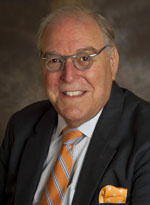 |
|
| Stuart Zola |
Researchers at Yerkes National Primate Research Center are fine-tuning a web-based test that gauges how long people view novel and repeat objects. The test can show whether a person is pre-symptomatic for cognitive decline or Alzheimer's.
"This could be the thing that helps with a huge problem facing the so-called silver tsunami," says Yerkes director Stuart Zola. "Hopefully, this will really have a positive impact on people's lives and on public health. Wouldn't it be wonderful if our grandchildren could grow up without the threat of Alzheimer's disease?"
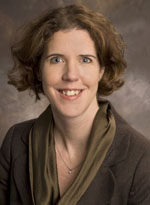 |
|
| Elizabeth Buffalo |
During years of research studies, Zola and co-developers Elizabeth Buffalo (Yerkes, neurology) and Cecelia Manzanares (Yerkes, neuroscience) found that monkeys and people—even those without any cognitive impairment—who focused equally on both the novel and repeat objects all developed MCI or Alzheimer's within that three- to six-year window. People who already were diagnosed with MCI at the time of their testing and who focused on both objects equally went on to develop Alzheimer's.
"If they were pre-symptomatic at the time of testing, then they were already on a trajectory," Zola says.
The team, along with Eugene Agichtein (math and computer science), launched a company, Neurotrack, this past October to secure venture capital funding and to commercialize the technology. (The 2013 South by Southwest Interactive Festival named Neurotrack the year's top web-based health technology.) While the team would eventually like to see the technology used in the doctor's office, right now it is targeting pharmaceutical companies who could use the test to find people for clinical trials who are pre-symptomatic.
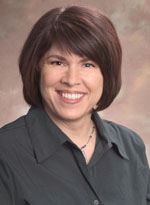 |
|
| Cecelia Manzanares |
Clinical trials for Alzheimer's treatments are difficult, Zola says, because companies or institutions must choose subjects who have no symptoms but whose status is uncertain with regard to whether they will develop Alzheimer's or choose people who are already symptomatic. "They may be overlooking a drug that could be useful because it's too late in the game to give it to Alzheimer's patients." The test developed by Zola's team provides the ability for the first time to select people who are pre-symptomatic but are on a trajectory for cognitive decline within several years, and people who are pre-symptomatic and are not on that trajectory.
Move-in begins for Health Sciences Research Building
 |
Researchers began moving into labs in the new Health Sciences Research Building on Haygood Drive after Emory received a certificate of occupancy for the building on April 10. Construction on the 200,000-sq-ft building first began in June 2011, following demolition of the Turman dormitory.
The new facility will focus substantially on pediatric research through the Emory-Children's Pediatric Center, a partnership between Emory and Children's Healthcare of Atlanta.
Four stories of the new building are above ground, and one floor is below grade. A two-story working bridge connects the third and fourth floors of the new building to the fourth and fifth floors of the Emory-Children's Center building, which is the home of Emory's Department of Pediatrics and is adjacent to Children's Healthcare of Atlanta on Uppergate Drive. The two-story bridge is named the Brumley Bridge in honor of George Brumley, chair of the Emory Department of Pediatrics from 1981 to 1995. Brumley died in a plane crash in 2003.
Research in the building will focus on drug discovery, immunology and vaccines, neurosciences, cancer, gastroenterology, transplant immunology, nephrology, biomedical engineering, and genetics. Working space on the Brumley Bridge will house researchers dedicated to informatics, outcomes research, public health research, and clinical research.
An open lab concept features natural light in labs and corridors. The building also includes a 160-seat auditorium. A cafe dining area adjacent to the auditorium will have outdoor seating.
At full capacity, the building will hold 500 people, including lead researchers and their teams.
The building is encased in five shades of marble, notes Charlie Andrews, senior associate VP for space planning and construction in the Woodruff Health Sciences Center. "In order to appear random, each piece was numbered and placed in an exact location, kind of like a giant jigsaw puzzle," he says.
The building was designed by ZGF (Zimmer Gunsul Frasca Architects LLP), and the general contractor was Brasfield & Gorrie. The building is expected to be LEED certified, with features such as sensors that ramp down the heating system when the building is unoccupied.
During demolition of the Turman dorm and construction of the new building 18,548 tons of waste was recycled, representing 98% of all construction waste.
Donors to the building include the Robert W. Woodruff, O. Wayne Rollins, Joseph B. Whitehead, Zeist, Martha and Wilton Looney, Katherine John Murphy, and Luther and Susie Harrison foundations; David, Helen and Marian Woodward Fund; Georgia Research Alliance; Raymond Schinazi; Margaret Hirst Davis; James and Helen Carlos; and two anonymous donors.
Sustained and coordinated effort is required
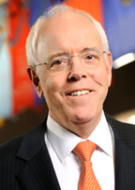 |
|
| Wright Caughman |
The Woodruff Health Sciences Center (WHSC) continues to feel the effects of multiple financial challenges on our research, education, and patient care funding. Leaders across our schools and units are working tirelessly to reduce expenses and increase revenue, and people at all levels of the WHSC are making meaningful contributions to these efforts by sharing scores of thoughtful and creative suggestions.
In response to my initial message about the projected consequences of these financial challenges, including sequestration, we have heard from many faculty and staff with ideas for cutting costs, generating additional income, and becoming more efficient and effective. We have heard great ideas for collaborating and sharing expenses across departments and units, for using available technology to improve meetings and administrative efficiency, for saving money on utilities and supplies, for enhancing programs of distinction, and many others.
A working team representing each of the WHSC units is reviewing the ideas and determining how best to implement them. We plan to take prompt and meaningful action on the input we're receiving, so I hope you will continue to keep the great ideas coming.
As I said in my first message, it will take the coordinated, dedicated efforts of all of us to respond rapidly to the new fiscal reality we're facing, and I have every confidence that our WHSC community will continue to excel in spite of the challenges we face.
I'm grateful to all those faculty, staff, and students who have shared their recommendations so far, and I look forward to hearing from many more of you. I will be sending a dedicated email message to you regularly in the coming months to update you on WHSC's financial transformation. Please continue sharing your thoughts and suggestions with me at evphafeedback@emory.edu.
 |
|
 |
Noteworthy
Two major gifts from Rollins Foundation
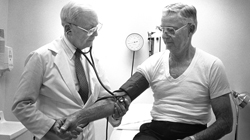 |
| Paul Seavey with a patient in the 1990s |
The O. Wayne Rollins Foundation has made a $5 million gift to support internal medicine at Emory in several ways: (1) expand the scope of the Paul W. Seavey Comprehensive Internal Medicine Clinic, (2) support faculty physicians known as Rollins Distinguished Clinicians, and (3) expand the Executive Health Discovery Database, which serves as a resource for research in general medicine.
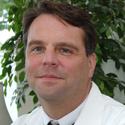 |
|
| David Roberts |
"The Rollins Foundation's gift will allow for an ever broader reach of Dr. Seavey's vision and mission of lifelong learning for general internal medicine faculty at Emory," says David Roberts, director of the new clinic and Charles F. Evans Chair of Internal Medicine. "Clinicians will benefit from more time and support for treating patients and teaching medical students and residents, and their research opportunities will expand as well."
Seavey (1926-2004) treated several generations of the Rollins family. Read more.
 |
|
| Viola Vaccarino |
The Rollins Foundation and Rollins family also donated $2 million to fund the Wilton Looney Chair of Cardiovascular Research in the Rollins School of Public Health. Viola Vaccarino (epidemiology) is the first to hold the chair. Her research focuses on the role of behavioral and psychological determinants of cardiovascular disease and their interplay with genetic and other biological factors in modulating cardiovascular risk. Read more.
Commencement 2013
 |
| Dashika Ellis was one of 137 BSN recipients in nursing. |
Commencement 2013 was marked by beautiful weather for ceremonies across the health sciences. The nursing school graduated 137 bachelor's degree students, 109 master's degree students, and three PhD recipients. Forty of the graduates held a perfect 4.0 grade point average. Elizabeth Corwin (associate dean, research) received the Faculty-Student Collaborative Research Award.
The medical school graduated 139 students, including its largest number of MD/MPH recipients ever, 23. Ira Schwartz (associate dean, medical education and student affairs) received the Evangeline Papageorge Distinguished Faculty Award.
Rollins School of Public Health had the university's oldest graduate this year. Albert Wright, 65, is the public health emergency preparedness administrator for the Fulton County Department of Health Services and now holds a master's degree in public health. Carlos del Rio (global health) received the Thomas Sellers Jr. Award.
This year's recipients of the Emory Williams Award for Distinguished Teaching include Jenny Foster (nursing), Michael Goodman (public health), and David Lloyd (medicine).
Sanda reports on new blood test for prostate cancer
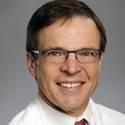 |
|
| Martin Sanda |
Martin Sanda, chair of urology, delivered big news about better prostate cancer diagnosis at the recent annual meeting of the American Urological Association. He was corresponding and presenting author of an abstract about use of the prostate health index for reducing overdetection and unnecessary biopsy of indolent cancer while improving detection of aggressive cancers. Read more.
Historical medicine exhibit on display through October
 |
| A binaural stethoscope, circa 1860, and a Civil War surgeon's kit, which includes several types of bone saws, bullet forceps, knives, and other instruments primarily used for amputations. |
"Medical Treasures at Emory," an exhibition of historical medical books and artifacts, is now open at Emory University's Woodruff Health Sciences Center Library—a reminder of the days when doctors had a rudimentary understanding of human anatomy, performed surgery without antiseptic, and used primitive forms of anesthesia.
Robert Gaynes (infectious diseases), author of the book Germ Theory: Medical Pioneers in Infectious Diseases, is the exhibition curator with Matt Miller, a resources management senior specialist at the library. Read more.
2013 WLA project abstracts
Each year's class of Woodruff Leadership Academy fellows is divided into multidisciplinary teams to tackle projects related to WHSC goals and needs. Each team presents its findings on its project at the end of the semester-long WLA session. Following are links to abstracts for this year's topics:
Connecting researchers, clinicians, and data to patient care
-
Optimizing physician and affiliate provider teams, and
OTT's new website
Emory's Office of Technology Transfer recently launched a new website. Check out the featured innovation of an anemia test home kit being developed by Wilbur Lam (pediatric hematology) and his team.
Dissertation sampler
Two dissertations from health sciences are featured on an Emory website showcasing standout dissertations across campus:
Pathways to women's empowerment in contemporary Bangladesh: Fertility, resources, and intimate partner violence, by Sara Head, adviser Kathryn Yount (global health)
The long-term effects of prenatal stress and/or antidepressant exposure in rats, by Chase Bourke, adviser Michael Owens (psychiatry and behavioral sciences)
Appointments
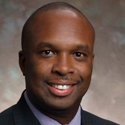 |
|
| Leon Haley |
Leon Haley (emergency medicine) has been appointed executive associate dean of clinical services for Grady and chief medical officer of the Emory Medical Care Foundation. He will begin his new role on July 8, serving as the primary liaison between the medical school and Grady Health System. Read more.
 |
|
| David Markham |
David Markham was named medical director of Saint Joseph's Heart Failure Clinic. He previously served as medical director of the Heart Failure Clinic at Parkland Memorial Hospital and associate director of heart failure, assist devices, and cardiac transplantation at University of Texas Southwestern Medical Center in Dallas.
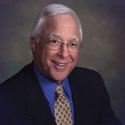 |
|
| Paul Scheinberg |
Paul Scheinberg (pulmonology) was appointed chief medical officer of Saint Joseph's Hospital. He also received the Napier Burson Jr. Award for Physician Distinction, Saint Joseph's highest recognition for doctors.
 |
|
| Anuradha Subramanian |
Anuradha Subramanian (surgery) was appointed medical director of the surgical intensive care unit at Grady Hospital.
Honors
The following health sciences faculty and staff recently received awards: View details.
• Volkan Adsay
• Carolyn Clevenger
• Sandra Franklin
• Costas Hadjipanayis
• Walter Ingram
• Bonnie Jennings
• Nadine Kaslow
• Allen Levey
• Michael Lubin
• Viraj Master
• Helen Mayberg
• Katie Oldham
• Stuart Zola
In memory
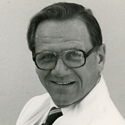 |
|
| Frederick King |
Frederick King, who served as Yerkes director from 1978 till 1994, passed away May 19. Read more about his research and career at Emory and a profile in the AJC. A memorial service at Yerkes will be held on Monday, June 10, at 4 p.m. Please call 404-727-7707 for more information.
